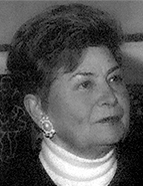

On 26 July 1952, Irisalva Moita was admitted as a scholarship holder at the I.A.C., a status she held until 1972, fulfilling the institution’s requirements, but without neglecting other areas that did not conflict with the conditions she had accepted. Her initial interest focused on research into Greco-Roman antiquity in relation to archaeology in Portugal, particularly the study of mosaics. From this field, she moved on to prehistory, carrying out several excavations with the aim of clarifying aspects of dolmen culture: in 1952 and 1953, she explored dolmens in the region of Pavia and Mora, in the Alentejo, and in 1955, she reviewed the exploration of those in Beira Alta, which had been carried out by Leite de Vasconcelos, which extended to the region of Viseu, publishing a Corpus of the monuments existing in this district. From 1958 onwards, due to incompatibility with Manuel Heleno, she became associated with the Centre for Peninsular Ethnology at the University of Porto, which belonged to the same institute. She began in the Guimarães region, visiting the interventions carried out two years earlier at Citânia de Briteiros and Castro de Sabroso, on the initiative of the Martins Sarmento Society in partnership with a team from the University of Oxford, led by Christopher Hawkes. The United Kingdom was then considered an undisputed scientific reference. Irisalva made a point of learning about the new findings and investigating the fieldwork methods and techniques used. She was equally interested in the archaeological work carried out in Portugal by the renowned French archaeologist Father Jalhay, about whom she wrote the article “Padre Jalhay” (O Arqueólogo Português, new series, vol. I, Lisbon, 1951 - separate publication). He continued his research throughout the country between 1959 and 1972, with a view to gathering all the information for his study “A Cultura Castreja no Ocidente Peninsular” (The Castreja Culture in the Western Peninsula) and the publication of “Inventário e Carta dos Castros de Portugal” (Inventory and Map of the Castros of Portugal), which remained unfinished. However, she published partial results in extensive annual reports, in various news articles based on them, and also presented them at specialist conferences. The scientific skills she demonstrated in such diverse fields confirmed her profile as an archaeologist.
This work is financed by national funds through FCT - Foundation for Science and Technology, I.P, in the scope of the projects UIDB/04311/2020 and UIDP/04311/2020.
